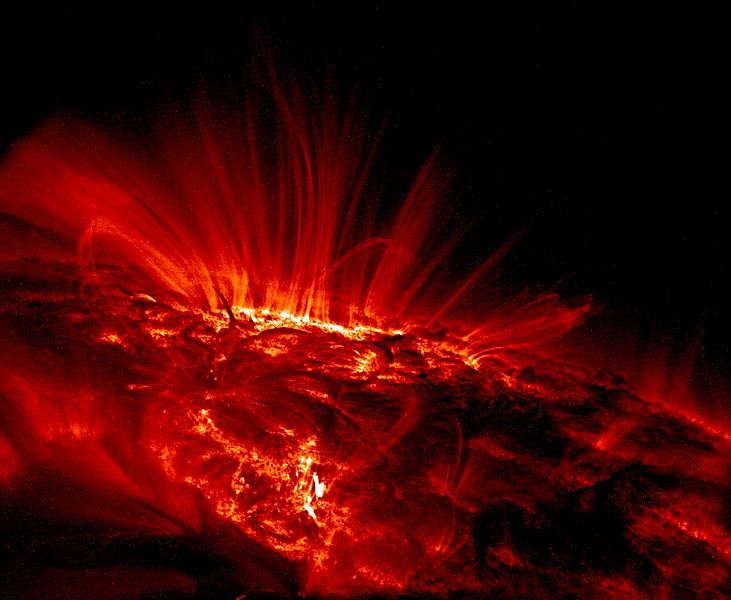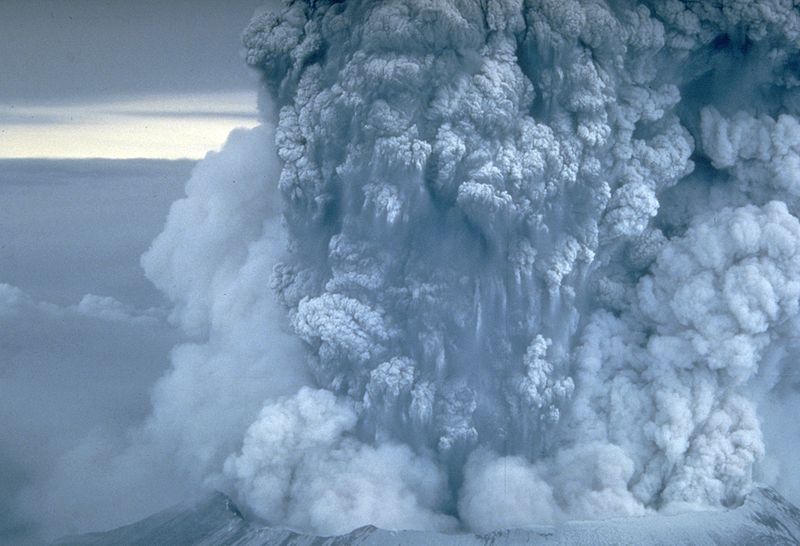EXPLORE: Natural Causes for Climate Change
| Site: | Mountain Heights Academy OER |
| Course: | Earth Science Q3 |
| Book: | EXPLORE: Natural Causes for Climate Change |
| Printed by: | Guest user |
| Date: | Friday, 1 August 2025, 3:39 AM |
1. Introduction
Several natural processes may affect Earth's temerature. In fact, natural processes are responsible for climate changes throughout most of Earth's past. Here are several natural causes for climate change:
- Sunspots. Sunspots are storms on the sun. When the number of sunsspots is high, the sun gives off more energy than usual. There is little evidence that links significant climate changes to sunspot activity, but it is an area of active research.
- Plate movements. Continents drift closer to the poles or the equator over time. Ocean currents also shift when continents drift. All these changes can affect Earth's global temperature. Also, plate movement triggers volcanic activity. A huge eruption could spew so much gas and ash into the air that little sunlight would reach the surface for months or years. This could lower Earth's temperature.
- Asteroid. A large asteroid hitting Earth would throw a lot of dust into the air. This could block sunlight and cool the planet.
- Earth's rotation on its axis. Earth goes through regular changes in its position relative to the sun. Its orbit changes slightly. Earth also wobbles on its axis of rotation. The planet also changes the angle it is tilted on its axis. These changes can cause alterations to Earth's global temperature.
- Natural greenhouse gas concentrations fluctuate. This (in addition to human caused greenhouse gas emissions) can raise global temperatures.
Source: Climate Change. Retrieved from http://www.ck12.org/section/Climate-Change-%253A%253Aof%253A%253A-MS-Climate/ on August 27, 2013.
2. Solar Variation

Sunspots are magnetic storms on the sun's surface. Photo courtesy of Wikimedia.
The amount of energy the sun radiates is variable. Sunspots are magnetic storms on the Sun's surface that increase and decrease over an 11-year cycle. When the number of sunspots is high, solar radiation is also relatively high.
However, there is no known 11-year cycle in climate variabitlity. Why did it turn up on climatologists' radar then? The Little Ice Age corresponded to a time when there were no sunspots on the sun. Climatologists think that sunspot activity, when combined with other causes, can alter global temperatures.
3. Milankovitch Cycles
Scientists attribute a series of ice ages to variation in the Earth's position relative to the sun, known as Milankovitch cycles. The Earth goes through regular variations in its position relative to the sun:
- The shape of Earth's orbit changes slightly. The orbit varies from more circular to more elliptical in a cycle lasting 90,000-100,000 years. When the orbit is more elliptical, there is a greater difference in solar radiation between winter and summer.
- The planet wobbles on its axis of rotation. At one extreme of this 27,000 year cycle, the Northern Hemisphere points toward the sun when the Earth is closest to the sun. Summers are much warmer and winters are much colder.
- The planet's tilt on its axis of rotation varies between 22.1º and 24.5º. Seasons are caused by the tilt of Earth's axis of rotation, which today is at 23.5º. When the angle of tilt is smaller, summers and winters differ less in temperature. This cycle lasts about 41,000 years.
When these variations are charted, a climate pattern of 100,000 years emerges. Ice ages correspond closely with MIlankovich cycles.
Source: USOE OER Resources. Retrieved from http://www.slcschools.org/departments/curriculum/science/documents/4-Earth-Science.pdf on August 28, 2013.
4. Plate Tectonics
Plate tectonic movements can alter climate. Over millions of years as seas open and close, ocean currents may distribute heat differently. For example, when all the continents were joined as the supercontinent Pangaea, nearly all locations experienced a continental climate (i.e. the interior land mass gets very cold). When the continents are separated, heat can be more evenly distributed.
Plate movements may help trigger an ice age. When continents are located near the poles, ice can accumulate, which may increase albedo and lower global temperature. Low enough temperatures may start a global ice age.

Large volcanic eruptions can lead to global cooling. Photo courtesy of NASA.
Plate motions also trigger volcanic eruptions. Eruptions release carbon dioxide, dust, gas and ash into the air. Even ordinary eruptions have short-term cooling effects; massive eruptions can change the climate for many years.
Source: USOE OER Resources. Retrieved from http://www.slcschools.org/departments/curriculum/science/documents/4-Earth-Science.pdf on August 28, 2013.
5. Greenhouse Gas Concentrations
Since greenhouse gases trap the heat that radiates off the planet's surfaces, what would happen to global temperatures if atmospheric greenhouse gas levels decreased? What if they increased? A decrease in greenhouse gas levels decreases global temperature and an increase raises global temperature.
Greenhouse gas levels have varied throughout Earth's history. For example, CO2 has been present at concentrations less than 200 parts per million (ppm) and more than 5,000 ppm. But for at least 650,000 years, CO2 has never risen above 300 ppm, during either glacieal or interglacial times.

Volcanic eruptions are a natural process that releases the greenhouse gas CO2 into the atmosphere. Photo courtesy of Wikimedia.
Natural processes that release CO2 into the atmosphere include volcanic eruptions and decay or burning of organic matter. Processes that remove CO2 from the atmosphere include absorbtion into plant and animal tissue. When plants are turned into fossil fuels, the CO2 in their tissue is stored within them. So, the CO2 is removed from the atmosphere (until it is burned later on).
Source: USOE OER Resources. Retrived from http://www.slcschools.org/departments/curriculum/science/documents/4-Earth-Science.pdf on August 28, 2013.